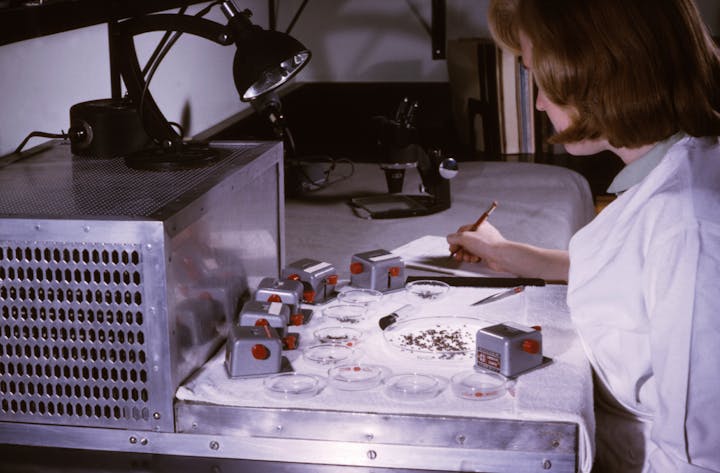Mosquito Trapping and Trap Types
Mosquito species all have their niche in nature, varying in their location, weather, and water tolerance. These differences extend into the timing, host, and attractant for how females feed. These differences mean that even though we wish it were easy to trap mosquitoes it is not. Different traps have been developed to help address the issues of differences is feeding habits, and attractants. Determining the types of traps to use is based on the species of mosquitoes in the population and the type of information you are trying to gather. We have been blessed in the North Fork Valley so far to be able to mostly monitor our mosquito population with one trap type. We are working on expanding our trap collection to increase our monitoring capabilities.

Trap Types Used by NFMAD
CDC-CO2 Traps
These traps capture a wide range of mosquito species as it relies on a source of carbon dioxide (CO2), to attract the mosquitoes in. Once the mosquitoes come close to the CO2 source they are pulled into a net by a fan. Where they are held until the net and trap are picked up.
Weekly Monitoring
Consists of 12 to 14 traps being set out two different nights a week throughout the North Fork Valley. These sites are located throughout the community in locations which allow us to gain an understanding of how the mosquitoes are impacting the population. We also take note of sudden increase in mosquitoes which allows us to respond quickly to the increase. These traps are sorted and the mosquito species that can carry the West Nile Virus are counted, and tested.
Gravid Traps
Are focused on attracting Culex mosquitoes which are looking for a water source to lay their eggs. The mosquito comes into land on the water and is pulled up and held in a net until they are picked up. This trap focuses on mosquitoes which have a greater chance of carrying West Nile virus.
BG-Sentinel Traps
Use a chemical lure to attract the mosquitoes, this lure is scented to mimic the human scent. This scent is extremely attractive for certain species of mosquitoes who primarily feed on humans. It has also been found that if used with CO2 to be a good trap for other mosquito species as well.


